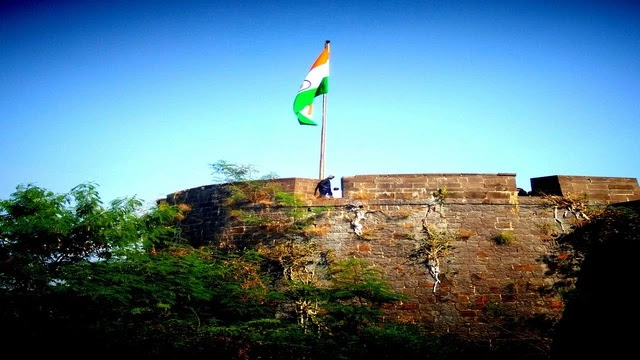All facts about Ahmadnagar fort
Ahmednagar Fort is a historic fort located in Ahmednagar, Maharashtra, India. It is a prominent landmark in the city and holds great historical significance. The fort was built by Malik Ahmad Nizam Shah I, the founder of the Nizam Shahi dynasty, in 1490 AD. It served as a strategic military outpost and played a crucial role in the defense of the region.
The Ahmednagar Fort is known for its robust architecture and massive walls, which are surrounded by a moat. The fort complex encompasses various structures, including palaces, mosques, residential areas, and temples. It also houses several water reservoirs that were vital for sustaining the fort during sieges.
One of the notable features of the fort is the Bhandardara Lake, situated within its premises. The lake provides a serene and picturesque setting, adding to the charm of the fort.
The fort has witnessed several battles and sieges throughout history. It played a significant role in the struggles between the Marathas, Mughals, and the British East India Company. The fort was captured by Mughal emperor Akbar in 1596 but was later recaptured by Maratha king Chhatrapati Shivaji Maharaj in 1657. It was also briefly held by the British in the 19th century.
Today, Ahmednagar Fort is a popular tourist destination and a protected monument under the Archaeological Survey of India. Visitors can explore the various structures within the fort and learn about its historical significance. The fort offers panoramic views of the surrounding landscape and provides insights into the rich history and architectural brilliance of the region.
In addition to its historical and architectural importance, Ahmednagar Fort is also associated with the life of Sant Dnyaneshwar, a prominent Marathi saint and poet. It is believed that Sant Dnyaneshwar wrote his famous commentary on the Bhagavad Gita, known as the Dnyaneshwari, while residing within the fort.
>>>>>>>>>>>>>>>>>>>>>>>>
Architecture and Layout: Ahmednagar Fort showcases a blend of Islamic and Maratha architectural styles. The fort covers an area of about 110 acres and is designed in a rectangular shape. It is surrounded by a 30-feet-deep moat, which provided an additional layer of defense. The fort walls are made of stone and are over 6 meters thick, contributing to its strength and durability.
Entrance Gates: The fort has several impressive entrance gates, including the Delhi Gate (main entrance), the Gunjawane Gate, and the Alamgir Gate. These gates are adorned with intricate carvings and serve as magnificent entry points to the fort.
Major Structures: Within the fort complex, there are several notable structures. Some of them include:
Siddhi Burj: It is a circular bastion located near the Delhi Gate. It served as a watchtower and provides a panoramic view of the surrounding areas.
Bhavani Temple: Situated within the fort, this temple is dedicated to Goddess Bhavani. It is an important religious site and attracts devotees.
Neelkantheshwar Temple: This temple is dedicated to Lord Shiva and is believed to have been constructed during the Maratha era.
Ahmednagar Palace: Located inside the fort, the palace was the residence of the Nizams and later served as a British residency. It houses a museum that displays artifacts, weapons, and historical documents.
Historical Significance: Ahmednagar Fort played a significant role in various historical events. It was a key stronghold during the Maratha-Mughal conflicts, witnessing battles led by great warriors like Chhatrapati Shivaji Maharaj. The fort also became a center for Maratha resistance against the British during the Indian independence movement.
Sound and Light Show: To provide visitors with an immersive experience, a sound and light show is conducted in the evening at Ahmednagar Fort. The show narrates the fort's history, highlighting its valor and the stories of the people associated with it.
Festivals and Celebrations: The fort is a venue for several cultural and historical events. One such festival is the Chand Bibi Mahotsav, which commemorates the bravery of Chand Bibi, the regent queen of Ahmednagar. The festival showcases cultural performances, traditional arts, and crafts.
Visiting Ahmednagar Fort allows you to delve into the rich heritage of the region, witness stunning architecture, and relive the glorious past of Maharashtra.





Comments
Post a Comment